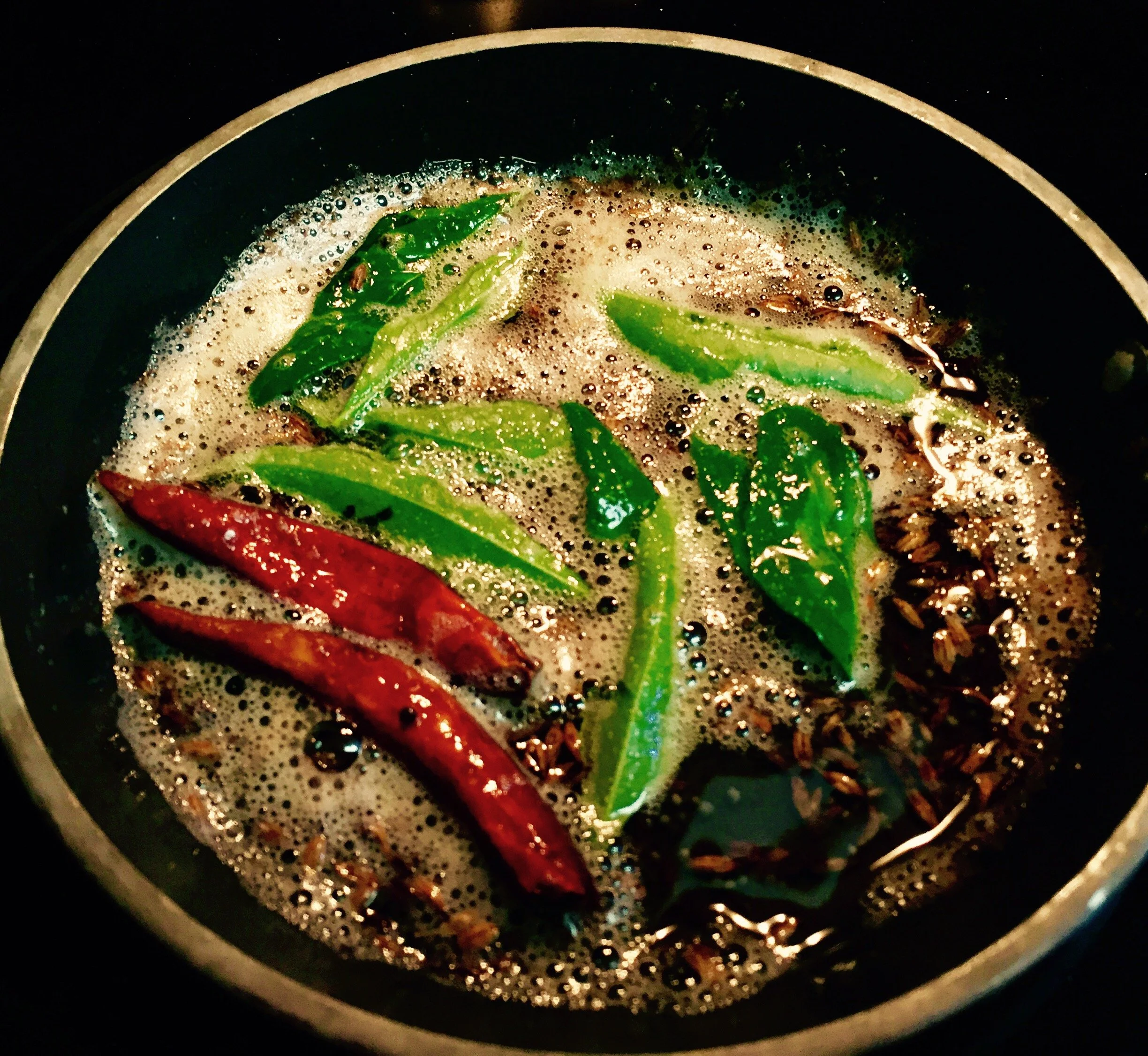Comfort in a Bowl: My Everyday Yellow Dal
Some foods don’t just fill your belly—they calm your soul. They wrap around you like a warm hug, whispering, “You’ve got this.” For me, this simple yellow dal is exactly that.
I remember coming home from school, totally worked up about something that—looking back—was probably not the crisis I thought it was. I’d plop myself onto the kitchen counter, watching my mom cook, venting dramatically about the injustice of the day while snacking on whatever veggies she was chopping—onions, cabbage, green peas... whatever was within reach.
She always listened with such grace, gave me a quick hug, and said the same thing every time:
“Tomorrow is a new day.”
And just like that, the world felt right again.
This dal takes me straight back to those evenings. It’s humble, nourishing, and packed with the kind of flavor that only comfort—and maybe a little nostalgia—can bring. It’s my ultimate comfort food, no matter what kind of day I’m having.
(And yes, in case you’re wondering, I was definitely a very dramatic teenager.)
India has countless versions of yellow dal—each region adds its own touch. Mine is a little bit of my mom’s Bengali style and a little bit of my mom-in-law’s Havyaka tradition. I like to slow cook it for hours in a tagine or crockpot, letting the flavors truly become friends. But you can absolutely make it quickly in a pressure cooker and it’ll still be delicious.
The real magic comes with the tempering. Just before serving, I pour over a hot tempering of mustard seeds, curry leaves, cumin, and sometimes dried red chili sizzled in ghee. The moment that mixture hits the dal, there's an audible crackle, a sizzle that feels almost ceremonial. And then—the aroma. Warm, nutty, sharp, and earthy, it rises up in a single fragrant puff that hits your nose before your spoon hits the bowl.
It’s in that exact moment the dal transforms from simple to soulful.
Serve hot with plain steamed rice or fresh roti or chapati And always, always with a drizzle of ghee for that extra mmm…
Time for Prep: 20 mins Time to Cook: 3 hours Yield: 4 Servings Level: Easy
Ingredients:
For the Dal:
1 cup Toor Dal (Pigeon Pea)
2 tbsp Moong Bean
2 tbsp Chana Dal (Split Chickpea)
3-4 Green Chilli Peppers, finely chopped (Optional or a gentle kick)
1 inch Ginger Root, finely chopped
9-10 Grape Tomatoes, cut. ((or regular ones, but I love the extra sweetness)
6-7 Shallots, Cut ((or red onions if that’s what you have)
1/2 tsp Salt (or more depending on your personal taste)
1/2 tsp Turmeric powder
For Tempering:
1 tsp Cumin
1 tsp Mustard seeds
1/4 tsp Asafetida (Hing)
4-5 Curry leaves
2-3 Dried Red Chillies
1 tbsp Ghee (Clarified Butter)
For Garnish:
2 tbsp fresh Cilantro, chopped
Process:
Cooking the Dal:
Rinse and soak the lentils for 30-40 mins.
Drain the water, transfer it to the cooking pot. To this add the chopped onions, tomatoes, green chillies, ginger, salt and turmeric. Add 3 cups of water. Stir Well
Cook on medium heat till you get a boil, then reduce heat to low and let cook for around 3 hours (Or till the lentils are soft). If the dal is too thick, you can add more water to get desirable consistency. Check salt and add more if needed based on taste.
Heat Ghee in a small pan. Add the curry leaves, cumin, mustard seeds and dried red chillies. Let it crackle.
Add the Asafetida. Fry for 30 seconds.
Pour this entire tempering, along with the ghee in to the cooked dal and mix it in. You can also serve with the tempering on top of it.
Garnish with chopped cilantro leaves.
Notes:
Shallots melt into the dal, adding depth without overpowering. Red onions work too but keep more structure.
Grape tomatoes bring sweetness and a pretty pop of color—plus they balance beautifully with ginger.
Slow cooking lets the spices and ingredients mellow together, but pressure cooking works just fine for busy days.


